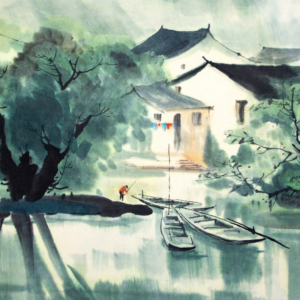Art as a whole should not be presumed better on the basis of the techniques used in it. Your definition of classic vs. modern art might be shaped by a pop culture reference, or perhaps by the art you see hanging in museums. But many modern artists and art experts don’t rank a particular style as better simply because it’s modern. Instead, they say it’s a matter of personal preference. “There’s just this notion that ‘modern’ is better,” says Dr. Christopher J. Moore, executive director of the Cleveland Museum of Art. “And just to be frank, there’s no better style.”
Classic Vs. Modern Art Techniques
Art lovers often debate the merits of classic versus modern art. While one appreciates the historically relevant methods of specific painting techniques (in the case of classics), others favor modern artists’ bold, abstract, and impressionistic styles. Each technique is popular for different reasons. Classic techniques are alive and well in the form of famous paintings, sculptures, and drawings, while contemporary techniques can be seen in modern paintings and sculptures. Both have their part to play in the art evolution, but if you’re looking for examples of each, we have lots of art that showcase both. That said, let us look at some of the more popular techniques employed in Classic and Modern art.
Classic Techniques of Art
- Alla Prima. Following the introduction of ‘Alla Prima’ (Italian for ’at first’), all artists quickly adopted this revolutionary technique. It involved painting using a single large brushstroke, which goes from the edges to the center of the canvas in one smooth movement. By changing the position of the brush and the angle of the painting, artists are able to produce energetic, vivid, and expressive results.
- Chiaroscuro. In this painting technique, most of the light falls on the part of the subject placed in the center of a painting and recedes towards darkness in the background. This highlights the subject without drawing too much attention away from it. Like numerous other painting techniques, chiaroscuro took shape during the Italian Renaissance period.
- Impasto. It is the technique of painting with a thick application of paint to create a textured surface and is often confused with gestural brushstrokes. Both methods feature heavy, textured paint, but impasto is more specific. Impasto involves applying paint with thick layers of texture in various directions that build up to an overall three-dimensional appearance.
- Palette Knife. This happens to be one of the most widely used painting techniques by contemporary artists. It’s been around since the 1600s, but it wasn’t until Pablo Picasso’s “Les Demoiselles d’Avignon” in 1907 that the palette knife became a popular, recognized technique. In 1930, Jackson Pollack popularized the drip technique, which, like oil paint, requires a palette knife.
Modern Techniques of Art
- Post-Impressionist. It is mostly painted in the open air; on outdoor easels; and requires quite a thick paint. The colors used in Post-Impressionist paintings and techniques tend to be bright, bold, and dramatic.
- Fauvism. When discussing modern art, Fauvism is often one of the first movements that comes to mind. Fauvism was a French art movement that emerged in the early 1900s. The name comes from the French word for ‘wild,’ which was how many of the artists described their paintings. A Fauvism painting would showcase vibrant colors with visible contrast to create unusual juxtaposition within an illustration.
- Cubism. Cubism, which first emerged in 1907, is a cutting-edge artistic movement that challenged traditional depictions of the human form. It revolutionized the art world, inspiring artists of all backgrounds and genres, from graphic design to children’s art. Cubism, which is also referred to as ‘Analytic Cubism’, is still taught in art schools worldwide. Artists of all skill levels can usually learn the basic techniques reasonably quickly.
- Futurism. It was an artistic style of the early 1900s, coined by Russian poet Vladimir Mayakovsky, who defined futurism as “a movement that enthusiastically anticipates and constructively comments on modern life.” The movement’s major proponent was artist Vladimir Tatlin (also Russian), who designed many of his works to look like mechanical pieces and other futuristic objects. The art revolution was intended to raise social and political consciousness. Further, it generated a belief in people that futuristic art would radically transform society to follow utopian ideals. The movement’s works showed great importance in breaking down traditional societal barriers between different classes, genders, races, and nationalities.
Artistry is in the eye of the beholder. You may not like Monet’s water lilies and Picasso’s Guernica, but everyone is different. Art is subjective; hence the interest and perspective of every human being are also impressionistic. There’s no such thing as an absolute masterpiece; just individual favorites rather.





